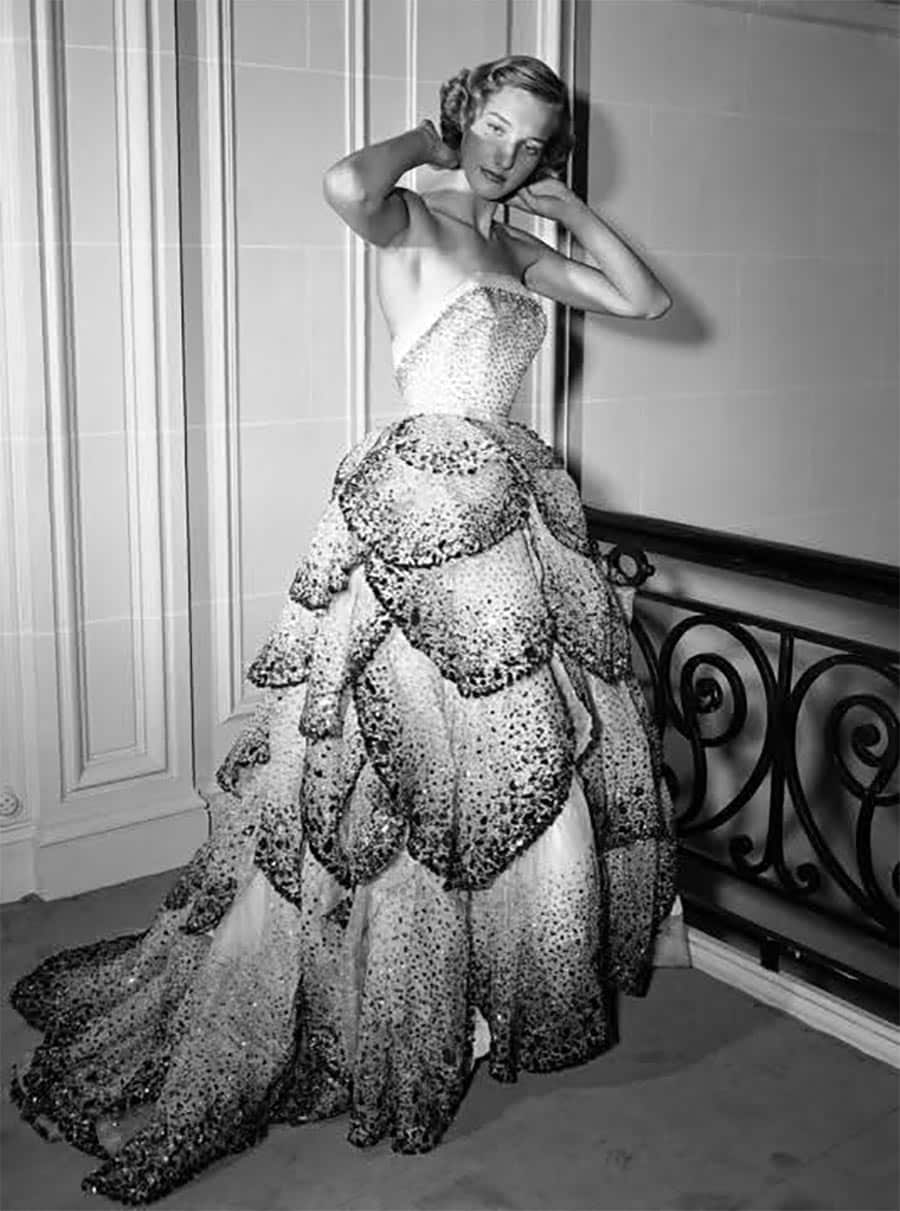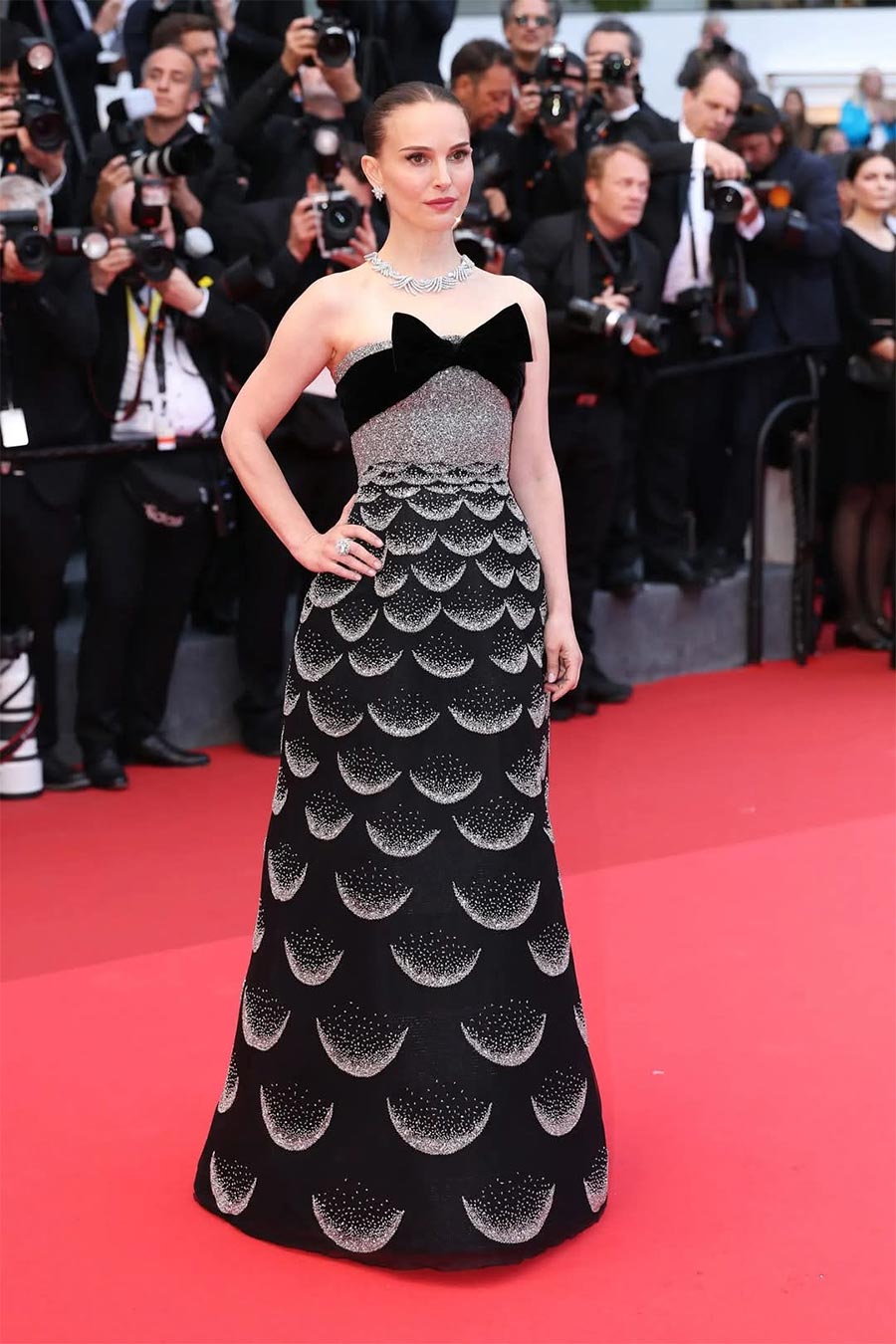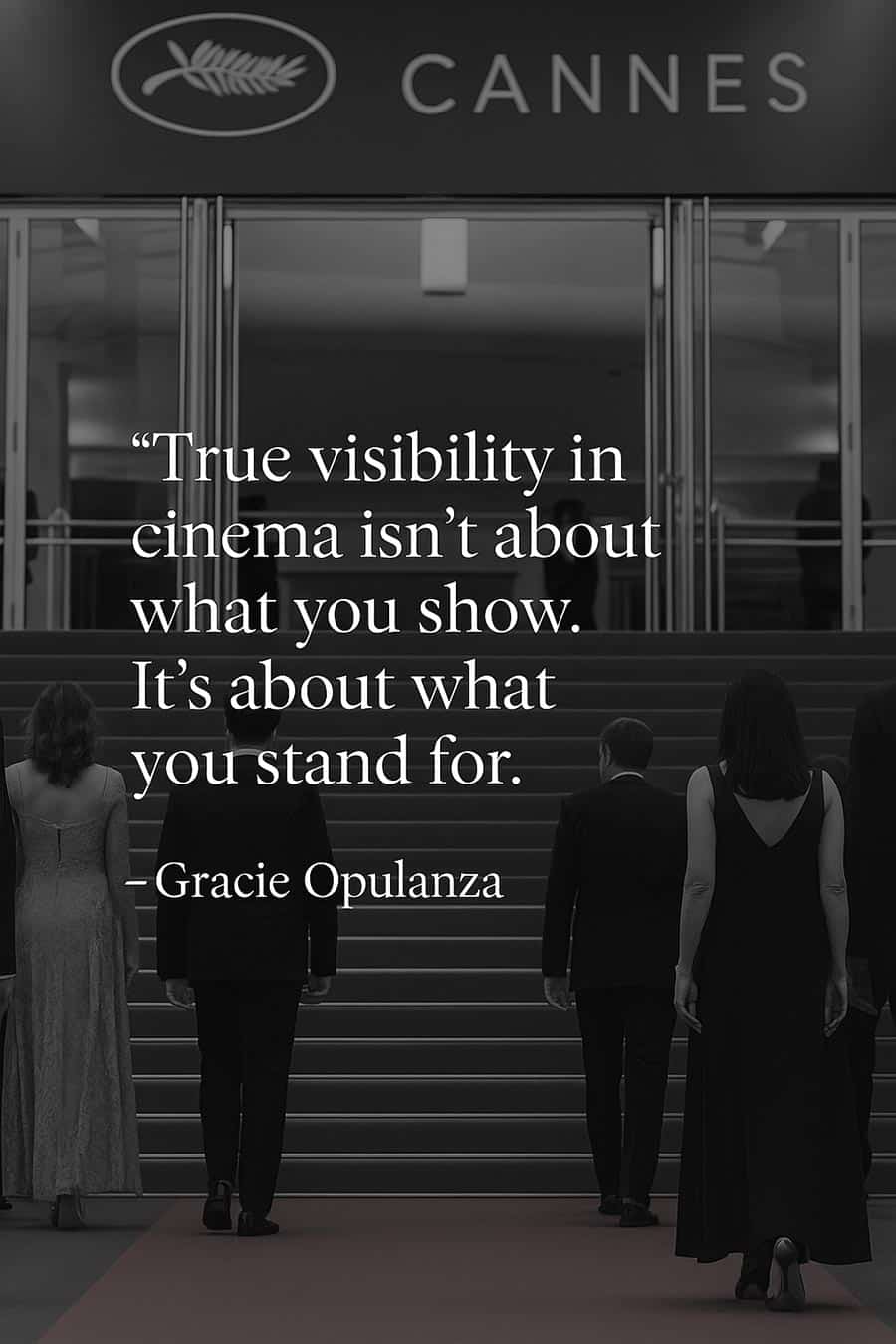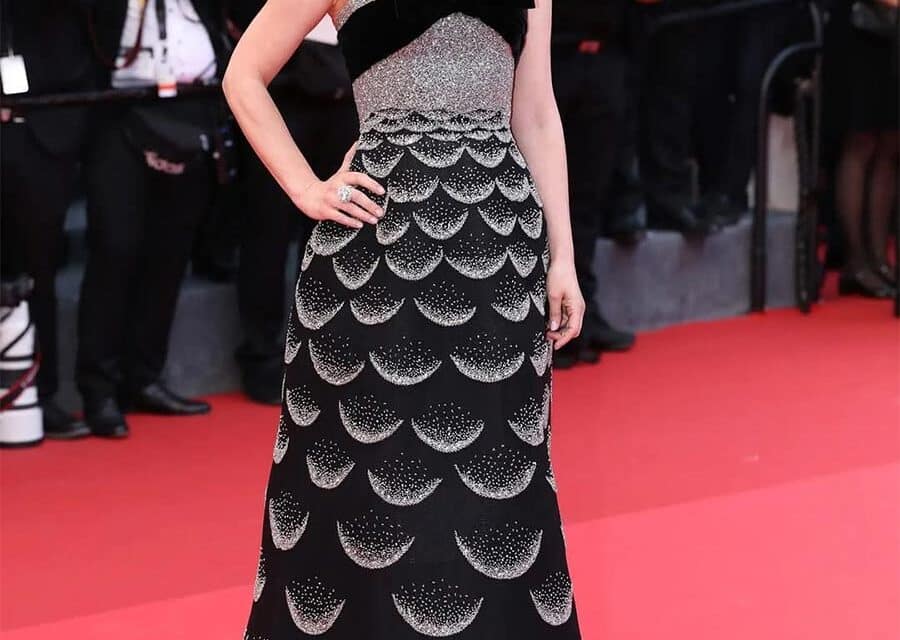At the 2023 Cannes Film Festival, while many were busy gasping at see-through panels and thongs masquerading as fashion, one woman reminded us all what red carpet royalty truly looks like: Natalie Portman.
The Academy Award-winning actress arrived in a breathtaking recreation of Christian Dior’s original 1949 “Junon” gown, a historical silhouette reimagined with couture precision. Layers of shimmering, iridescent petals cascaded down the full skirt, echoing the glamour of post-war Paris fashion. The bodice? Structured, graceful, and unapologetically modest.
And just like that—without nudity, sheer fabrics, or side-boob gimmicks—Natalie Portman dominated the red carpet.

The Dior Gown: A Celebration of Craft, Not Flesh
Let’s begin with the facts: this gown wasn’t about exposure. It was about excellence. The “Junon” dress is one of Dior’s most celebrated pieces from the golden age of haute couture. It embodies what fashion used to stand for—artistry, storytelling, structure, and silhouette.
Natalie Portman didn’t just wear a dress. She revived fashion’s legacy. And more importantly, she reminded the world that women can own the red carpet without shedding their dignity—or their undergarments.
This was more than a style choice. It was a statement:
Elegance doesn’t require nudity. Influence doesn’t need transparency.
Red Carpets and the Rise of the Sheer Dress Epidemic
Over the past decade, the red carpet has undergone a slow, but very visible shift. What was once a place of glamour, tradition, and timeless tailoring has become a platform for shock-value styling.
These days, one’s viral moment at Cannes or the Met Gala isn’t determined by craftsmanship or homage. It’s measured by how much skin you’re willing to show. Every season, we get headlines about “brave” fashion choices—when in reality, they’re recycled lingerie looks disguised as innovation.
Let’s be clear: I’m not against sensuality or bold dressing. But when the norm becomes sheer gowns with visible underwear (or no underwear at all), we have to ask—what message are we sending?
Especially at events meant to celebrate cinema, storytelling, and women’s artistic contributions.

Natalie Portman’s Look Wasn’t Just Nostalgic—It Was Revolutionary
In a room full of transparent fabrics, Portman’s Dior gown was radical in its restraint. She didn’t need a thigh slit or mesh cut-out to make an impact. Her power came from grace, from memory, from a dress that required skill and patience to construct—not just tape and contouring.
We forget that rebellion can also look like refinement. And Portman, with her deep understanding of fashion history and her longstanding collaboration with Dior, used that knowledge to deliver one of Cannes’ most unforgettable fashion moments.

Why Women Deserve Better Than Lingerie on the Red Carpet
For aspiring female filmmakers, directors, and actresses looking to Cannes for inspiration, what are they really seeing? Are they seeing women elevated for their storytelling? Or simply evaluated for their sheer panels and barely-there gowns?
The red carpet is still one of the most visible stages in the world. And while visibility is important, we must distinguish visibility from value.
Seeing Dakota Johnson, or others, walk around in glorified underwear at an event meant to honour female filmmakers doesn’t empower the next generation. It sends the message that influence in cinema still requires sexual packaging.
Women are not costumes. And fashion isn’t just about how little you can wear.
Fashion Is Storytelling—So What Story Are We Telling?
The Dior “Junon” dress was designed in a post-war world yearning for beauty, structure, and optimism. It represented a return to luxury, femininity, and quiet strength.
What do today’s sheer dresses say?
Often: look at me. Look at what I’m not wearing. Look at what I’m selling.
They don’t say “celebrate my career.”
They scream “rank me on a list.”
That’s not the future of fashion. That’s regression wrapped in rhinestones.
Portman’s choice, by contrast, was about legacy. About placing herself in a timeline of women who valued grace over gimmick.

Let’s Stop Confusing Exposure With Empowerment
There’s a dangerous narrative in fashion commentary that equates nudity with bravery. That sheer gowns are “feminist,” because women are choosing to be seen on their own terms.
But how free is that choice when stylists, PR teams, and media all incentivize flesh over fabric? How many actresses feel pressure to “keep up” by showing more each year, just to remain relevant?
Empowerment means options.
Empowerment means you can wear Dior from the 1950s or Mugler from 2025, and be seen equally for your talent.
Natalie Portman didn’t need to compromise. And that’s the very definition of power.
A New Standard: Femininity, Artistry, and Intelligence
For over a decade, I’ve covered the world’s most luxurious cars, gowns, and experiences. I’ve witnessed trends come and go—but I’ve also seen what endures. And what endures is substance wrapped in style.
Portman’s gown didn’t beg for likes. It commanded respect.
We need more of this on red carpets:
- Gowns that reference fashion history.
- Designers who understand structure and symbolism.
- Women dressed not as objects, but as icons.
Because real fashion doesn’t need to shout.
It whispers, it remembers, and it raises the bar.
Final Thoughts: Dior Over Disposability
To the next wave of women attending Cannes, Venice, or the Oscars—look to Natalie Portman, not Instagram bait. Choose designers who celebrate your voice, not just your figure. Wear fashion that elevates you, rather than strips you down.
The red carpet is still a stage. Let’s stop performing and start presenting.
So yes, I’m tired of seeing everyone’s underwear.
What I want to see is more Dior. More detail. More depth.
And if that comes with less visibility but more meaning?
Then fashion, finally, is back in motion.















You must be logged in to post a comment.